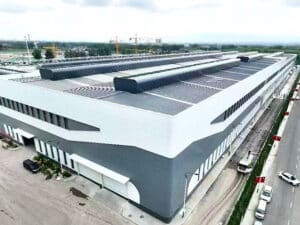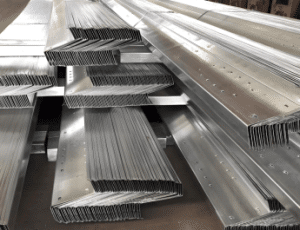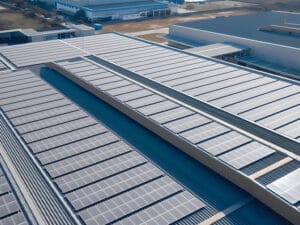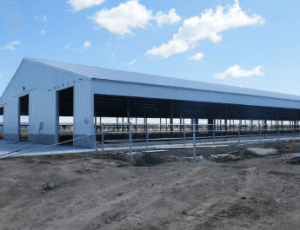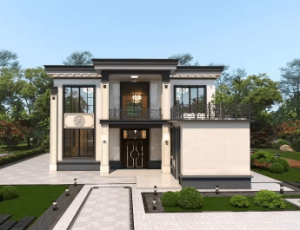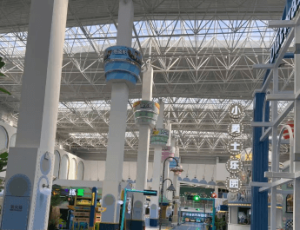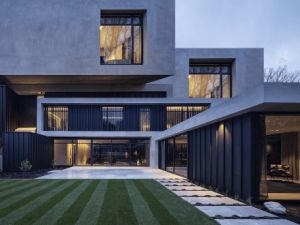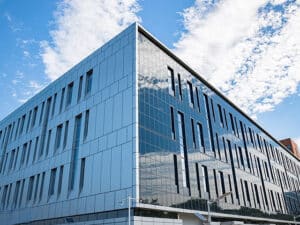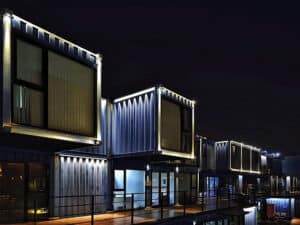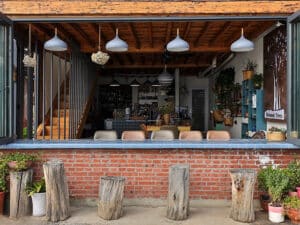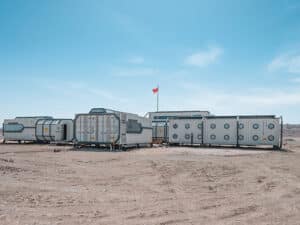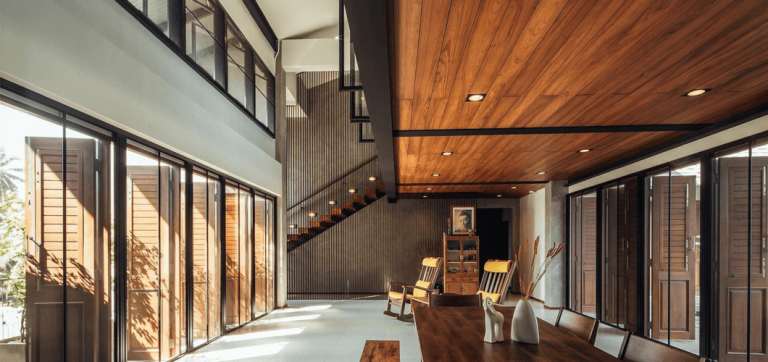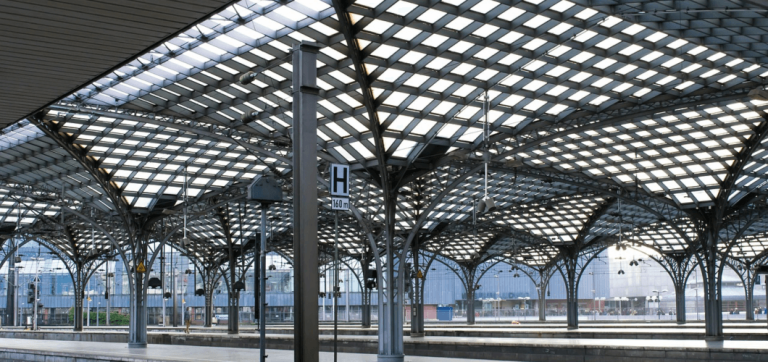Introduction
In the continuous development of the construction field, steel structure engineering has become the core force for building various types of buildings with its unique advantages. From large industrial plants to exquisite villas, from functional containers to green photovoltaic facilities, and then to magnificent grid bridges, there is a series of professional technical support behind them.
The following is the technical support provided for these projects:
01.
Steel structure industrial plant
- Structural design and optimization: Use advanced CAD/CAM software for mechanical simulation analysis, accurately design the cross-sectional dimensions and structural forms of beams and columns according to the use function of the plant, equipment layout, crane load and other factors, and use space grids, rigid frames and other structural systems to ensure that the plant has sufficient strength, rigidity and stability, while optimizing the use of materials and reducing costs.
- Fire prevention and anti-corrosion technology: According to the fire hazard level of the factory building, select appropriate fire retardant coatings (such as ultra-thin, thin coating, and thick coating) for spray protection to meet different fire resistance limit requirements; hot-dip galvanizing, plastic spraying and other anti-corrosion treatments are carried out on steel components, or weathering steel materials are used to enhance their durability and adapt to the harsh conditions such as high temperature, high humidity, and corrosive gases in industrial environments.
- Construction and installation technology: Develop a detailed construction organization plan, including component prefabrication, transportation, and hoisting sequence and methods. Use large-scale hoisting equipment (such as tower cranes and truck cranes) to accurately install steel columns and steel beams, and use a combination of bolt connection and welding to ensure that the nodes are firm; at the same time, set up temporary support and stabilization systems to ensure structural safety during construction, efficiently complete factory construction, and reduce the impact on production operations.
02.
Steel structure container
- Strengthening of box structure design: Through finite element analysis, the corner pieces, side panels, top panels, bottom panels, etc. of the container are optimized and designed, high-strength weather-resistant steel materials are selected, and reinforcement ribs and ring beams are added to key parts to improve the overall rigidity and load-bearing capacity of the box, meet the force requirements during lifting, stacking and transportation, and ensure the safety of goods.
- Insulation and sealing technology: New insulation materials (such as rock wool boards and polyurethane foam boards) are used to fill the box wall panels, and high-quality sealing strips and sealants are used at the joints to ensure that the container has good insulation, heat insulation and moisture-proof properties. It can be used for refrigerated transportation or temporary building residential units to reduce energy consumption and expand its use functions.
- Rapid assembly and transformation technology: Develop standardized assembly processes and use bolt connections to achieve rapid splicing and disassembly of the box; at the same time, creatively transform the container according to customer needs, such as opening doors and windows, installing water and electricity systems, and installing interior decorative panels, etc., to transform it into modular buildings such as movable office spaces, shops, and houses to meet diverse market needs.
03.
Steel structure villa
- Personalized design and customization: Combined with the owner’s living habits, aesthetic needs and site conditions, use 3D modeling technology to personalize the exterior and interior space of the villa, rationally plan functional divisions (such as living room, bedroom, kitchen, bathroom, garage, etc.), and consider lighting, ventilation and landscape orientation to create a comfortable and pleasant living environment.
- Application of light steel structure system: Use light steel keel as the main load-bearing structure, combined with floor decking, insulation cotton, breathing paper, exterior wall hanging panels and other materials to form a complete wall, roof and floor system. Light steel components are prefabricated in the factory and assembled on site with bolts. The construction speed is fast, the precision is high, and it has good seismic resistance, providing safe and reliable structural protection for the villa.
- Green energy-saving technology integration: Incorporate green energy-saving concepts into villa design, install solar water heating systems and photovoltaic power stations, use ground source heat pumps, air-energy water heaters and other equipment to achieve energy self-sufficiency; use double-layer hollow glass, broken bridge aluminum doors and windows and other energy-saving door and window systems, as well as high-efficiency insulation materials to reduce building energy consumption and improve living comfort and environmental protection.
04.
Steel structure photovoltaic
- Photovoltaic bracket structure design: Design customized photovoltaic bracket structure according to the installation location (roof, ground, hillside, etc.), orientation, inclination and local meteorological conditions (wind load, snow load, earthquake intensity) of solar panels. Aluminum alloy or hot-dip galvanized steel is used to make the bracket, and it is ensured to have sufficient strength and stability through structural calculation. At the same time, the adjustability of the bracket is considered to optimize the lighting angle of the solar panel and improve the power generation efficiency.
- Photovoltaic module installation and electrical connection technology: Use professional installation tools and methods to firmly fix the photovoltaic modules on the bracket to ensure reliable and safe electrical connections between modules to avoid line loss and leakage risks; install lightning protection and grounding devices to protect the photovoltaic system from lightning damage; equip with intelligent monitoring systems to monitor the power generation, voltage, current, temperature and other parameters of the photovoltaic power station in real time, timely detect and eliminate faults, and ensure the stable operation of the power station.
- Building integration technology: Carry out photovoltaic integration design on steel structure buildings (such as industrial plants and public building roofs), and use solar panels as part of the building roof or wall to achieve an organic combination of building and energy. By optimizing the structural design and waterproofing and heat insulation treatment, the photovoltaic system and the building structure are perfectly integrated, which not only meets the functional requirements of the building, but also generates clean energy and improves the comprehensive benefits of the building.
05.
Steel structure grid bridge
- Structural analysis and scheme selection: Use large-scale finite element analysis software to simulate and analyze the structure of the grid bridge, consider different load combinations (dead load, live load, wind load, earthquake load, etc.), determine the reasonable grid form (such as flat grid, curved grid, hollow grid) and bridge structure system (such as simply supported beam, continuous beam, arch bridge, cable-stayed bridge, etc.), optimize the cross-sectional size of the rod and the node connection method, and reduce the project cost and structural deadweight under the premise of meeting the bearing capacity and deformation requirements.
- Manufacturing and installation process: Use high-precision CNC processing equipment in the factory to manufacture grid rods and nodes to ensure the dimensional accuracy and quality of the components; at the construction site, according to the scale and site conditions of the bridge, select the appropriate installation method, such as overall hoisting method, block hoisting method, sliding method, top-pushing method, etc., use large-scale lifting equipment and temporary support system to gradually install the grid structure in place, and make precise measurements and adjustments to ensure that the linear shape and structural stress of the bridge meet the design requirements.
- Durability and maintenance technology: Carry out long-term anti-corrosion treatment on steel structure grid bridges, using methods such as hot-dip galvanizing and spraying heavy anti-corrosion coatings to protect steel from atmospheric corrosion and water erosion; establish a bridge health monitoring system, use sensors to collect real-time data such as stress, strain, displacement, vibration, etc. of the bridge, use data analysis technology to evaluate the structural health of the bridge, promptly identify potential safety hazards, and formulate scientific and reasonable maintenance and reinforcement plans to extend the service life of the bridge and ensure traffic safety.

